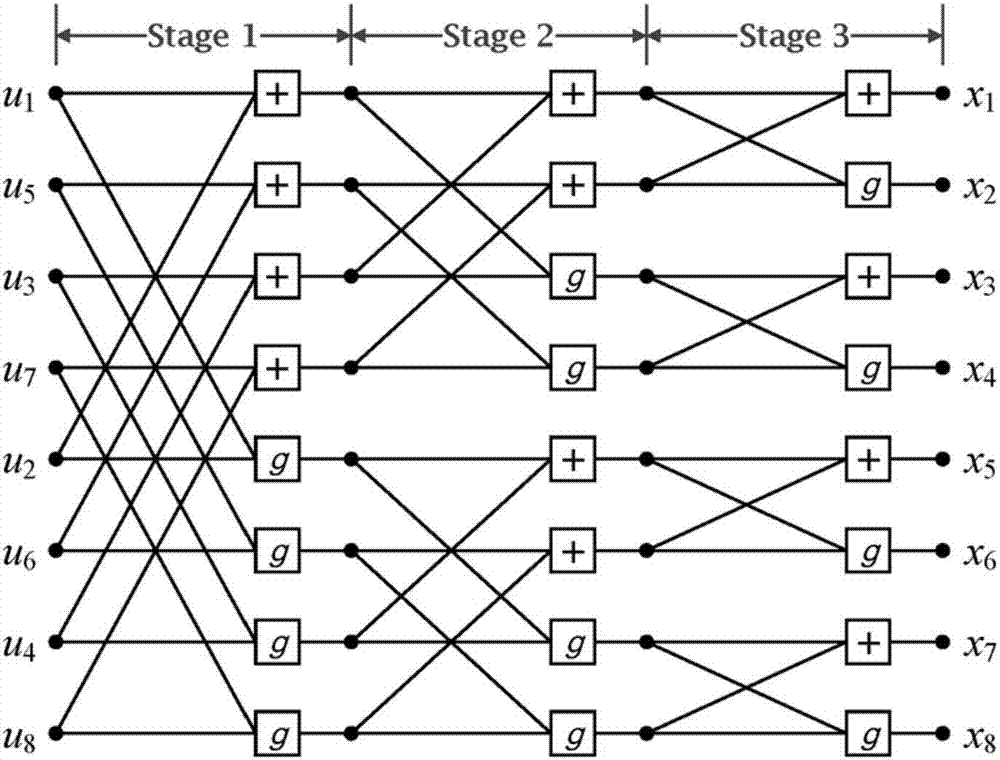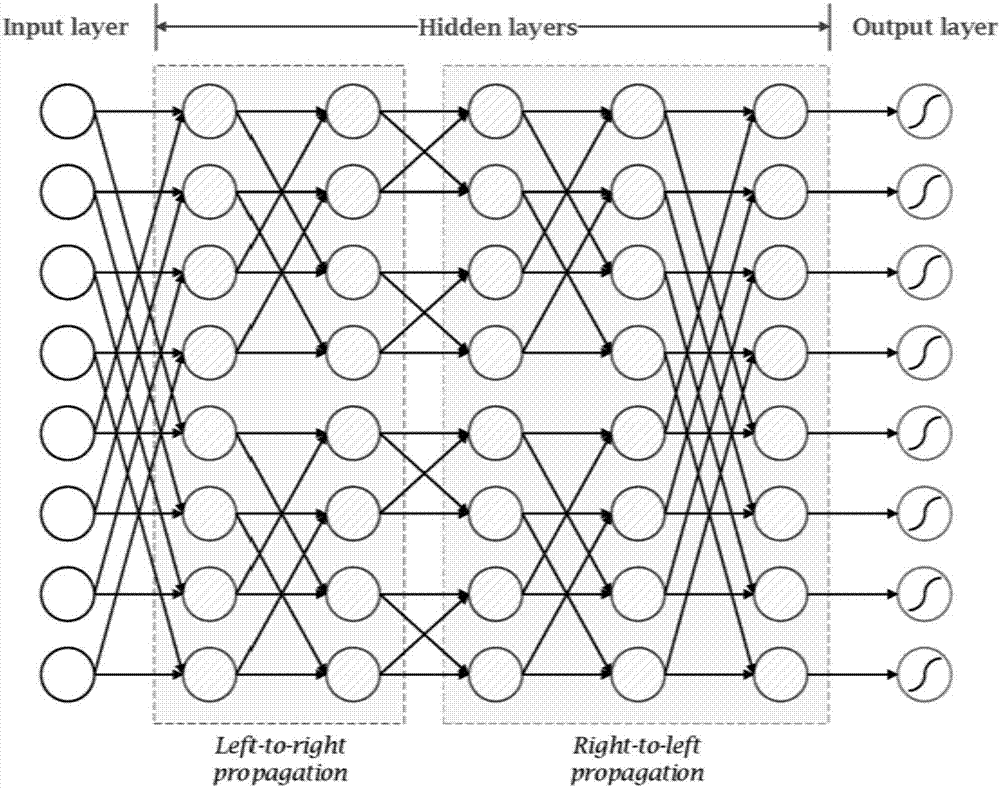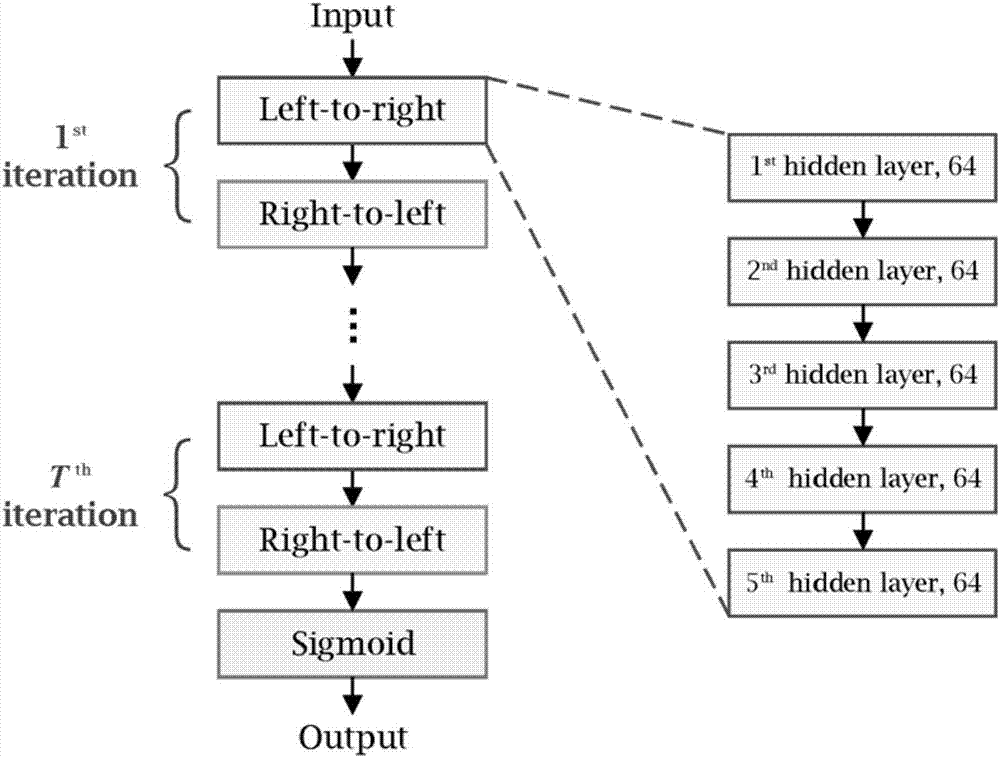Polarization code decoding algorithm based on deep learning
A deep learning and decoding algorithm technology, applied in coding, code conversion, coding components, etc., can solve the problems of slow convergence speed, reduce decoding complexity and decoding delay, etc., to speed up the convergence speed and reduce the number of iterations , The effect of hardware consumption saving
- Summary
- Abstract
- Description
- Claims
- Application Information
AI Technical Summary
Problems solved by technology
Method used
Image
Examples
Embodiment Construction
[0025] The technical solutions of the present invention will be further described below in conjunction with the accompanying drawings and embodiments.
[0026] like figure 1 Shown is the iterative factor graph of polar code BP decoding, and polar code BP decoding is the log likelihood ratio information that iteratively propagates from left to right on the factor graph. Taking a polar code with a code length of N=8 as an example, the leftmost part of the factor diagram corresponds to the bit information u, and the rightmost part corresponds to the accepted codeword x.
[0027] Among them, (i, j) represents the node in the j-th row in the i-th column, and each node contains the left and right log likelihood ratio information, and the information propagated to the left in the t-th iteration is denoted as The information propagated to the right is denoted as In the initial stage of decoding, the leftmost and rightmost information are initialized as follows:
[0028]
[002...
PUM
 Login to View More
Login to View More Abstract
Description
Claims
Application Information
 Login to View More
Login to View More - Generate Ideas
- Intellectual Property
- Life Sciences
- Materials
- Tech Scout
- Unparalleled Data Quality
- Higher Quality Content
- 60% Fewer Hallucinations
Browse by: Latest US Patents, China's latest patents, Technical Efficacy Thesaurus, Application Domain, Technology Topic, Popular Technical Reports.
© 2025 PatSnap. All rights reserved.Legal|Privacy policy|Modern Slavery Act Transparency Statement|Sitemap|About US| Contact US: help@patsnap.com



